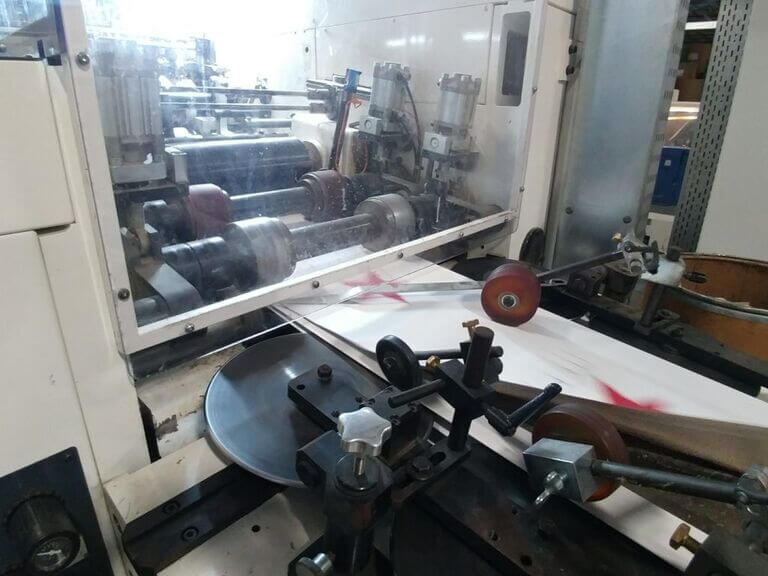Mr. B worked at a plant that makes paper bags for grocery and department stores. His job was to operate one of the machines that made the paper bags. One day while working on the machine, it suddenly pulled his hand into the rollers, causing him to suffer a degloving injury to three fingers. BBGA attorneys, including Alex Hughes, investigated the incident, determined that the manufacturer did not design the machine properly, filed a lawsuit against the manufacturer, and secured a confidential settlement before the case went to trial.
The Incident
Mr. B was operating the machine when the reel of paper feeding into the machine broke. He stopped the machine, raised the plexiglass protective hood that covered the rollers, threaded the paper back into the rollers, and then lowered the protective hood. When lowered, the protective hood has a gap underneath it that allows the paper to flow into the rollers. Mr. B restarted the machine and was aligning the paper when the paper caught his hand and pulled it through the gap, under the protective hood, and into the rollers.
The Injury
Mr. B suffered a degloving injury to three fingers on his left hand. A degloving injury is a traumatic wound where the top layers of skin and tissue are torn away from the underlying muscle, connective tissue, or bone. An air ambulance transported him to the hospital. He has had three surgeries to save his hand and help him regain its use. Despite the doctors’ best efforts, Mr. B will, unfortunately, have life-long complications from his injury. Simple activities such as buttoning a shirt, zipping his pants, tying his shoes, eating food, doing yard work, or playing with his children are difficult or impossible. His fingers are overly sensitive to the touch and are often painful, especially when the weather is cold.
International Standards for Machine Guarding
To prove that the machine is dangerous and defectively designed, our attorneys researched how manufacturers should design machines like the one that injured Mr. B. In doing so, they learned that the manufacturer certified the machine complied with ISO 13857, which is an international machine guarding standard implemented to prevent injuries like this one.
The International Organization for Standardization (ISO) sets standards for different industries. ISO standards are essentially “best practices.” To quote ISO, standards are “a formula that describes the best way of doing something.”
ISO Standard 13857 is a machine-guarding standard. It sets specific safety distances between the worker’s hands, arms, and body, and the machine’s moving / hazardous parts. When a machine like this one has rollers protected by a hood, ISO standards require that the worker be a specific distance from the rollers based on how large the gap is under the protective hood. ISO standards require that the larger the gap under the hood, the greater the distance the worker should be from the rollers. This helps prevent the workers’ hands and arms from accidentally going under the hood and into the rollers.
Investigation Proves the Machine Did Not Comply with Machine-Guarding Standards
Mr. B retained BBGA shortly after the degloving incident. We hired a mechanical engineer with expertise in machine guarding to inspect the machine. The expert’s measurements showed that the gap under the protective hood was too large, given how close it was to the rollers. To comply with the machine-guarding standards, all the manufacturer needed to do was extend the protective hood a few more inches, which would have likely prevented Mr. B’s hand from going under it and into the rollers.
BBGA’s investigation also revealed that following the incident, the plant modified the machine that injured Mr. B – along with other similar machines at the facility – by lengthening the protective hoods, which reduced the gaps under them.

Litigation & Settlement
Because the manufacturer is from another country, BBGA attorneys filed a lawsuit in federal court. They took the depositions of multiple employees involved in the design and installation of the machine and the depositions of Mr. B’s supervisors and co-workers at the plant. Our attorneys defeated multiple motions by the defense seeking to have the case dismissed. They then mediated the case and secured a confidential settlement that fairly compensates Mr. B for his injuries. We are pleased to have helped Mr. B with his case and we wish him continued success in his ongoing recovery.

